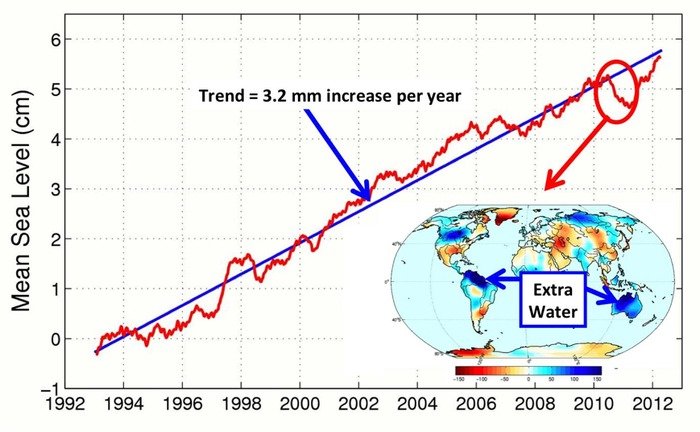Global sea level, which dipped sharply in 2010-11 due to a strong La Nina event, has recovered and resumed its long-term upward climb. Credit: NASA/JPL-Caltech/CNES
PASADENA, Calif., Nov. 19 (UPI) -- The trend of rising sea levels hit a "speed bump" in 2010 as global sea levels fell sharply, U.S. scientists analyzing satellite data said.
Researchers at NASA's Jet Propulsion Laboratory in Pasadena, Calif., and the University of Colorado in Boulder said between early 2010 and summer 2011 global sea levelS fell by about a quarter of an inch.
Data from the NASA/German Aerospace Center's Gravity Recovery and Climate Experiment satellite showed the drop was caused by the very strong La Nina event that began in late 2010, JPL said.
This periodic Pacific Ocean climate phenomenon changed rainfall patterns all over the planet, scientists said, moving huge amounts of Earth's water from the ocean to the continents, primarily to Australia, northern South America and Southeast Asia.
The drop in levels did not last, they said; by mid-2012 the global mean sea level had not only recovered but had resumed its long-term mean annual rise of 0.13 inches per year.
"The water the ocean 'lost' was compensated for rather quickly," lead study author Carmen Boening of JPL said. "The newest data clearly indicate that the drop in 2010-11 was only temporary."
The long-term rise of the ocean will almost certainly be ongoing, the researchers said.
"The dip in global sea levels, brought to us courtesy of a major La Nina event, was little more than a pothole in the long road toward a rising ocean and shrinking coastlines," study co-author Felix Landerer of JPL said.















